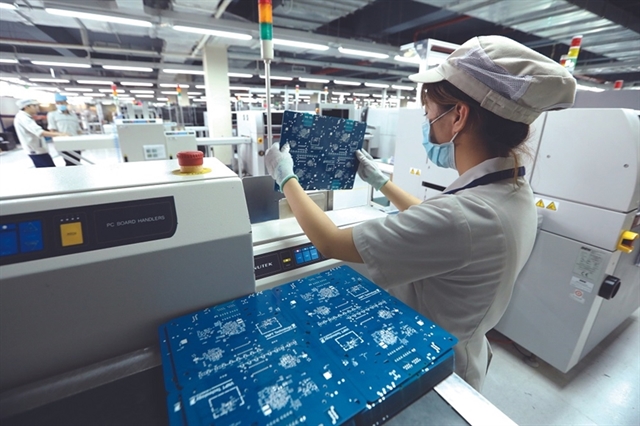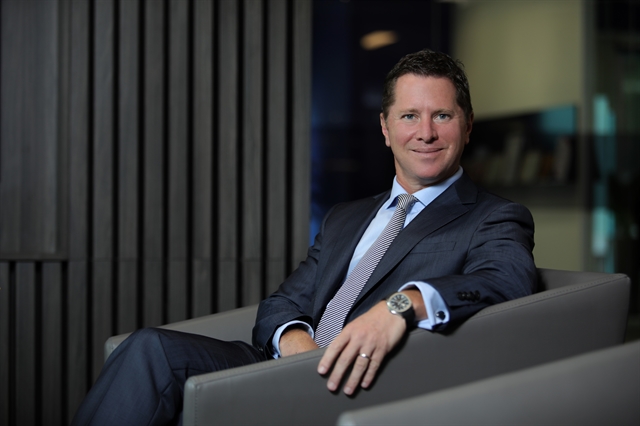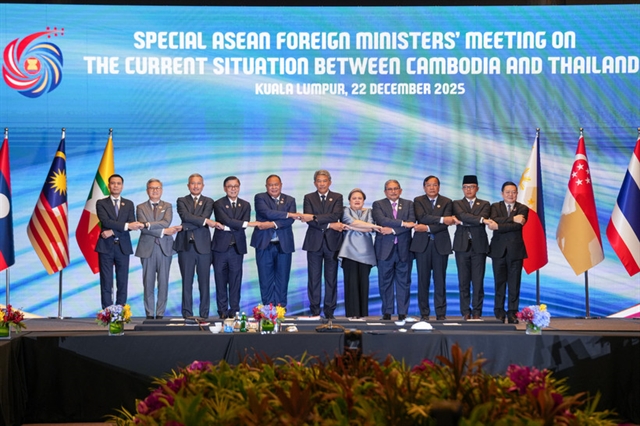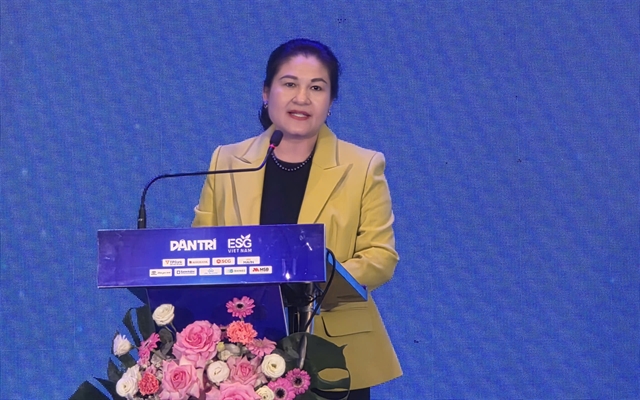 Economy
Economy

As environmental concerns rise and resources deplete, we need to shift towards a new model of consumption, which can support the economy and help the planet: the circular economy. Tim Evans, CEO of HSBC Vietnam, talks about the possibilities and challenges of a circular economy.
Inner Sanctum: The concept of a circular economy is getting more and more attention. What is it?
There are many definitions of what the circular economy is. In HSBC’s view, the circular economy is an alternative economic model to the linear model, which consists of manufacture, use and disposal. It promotes sustainable development by designing products, systems and processes that focus on recycling and reuse, minimising waste, conserving natural resources, and providing efficiency gains.
The concept of circularity is that we move from a world where we make-consume-dispose to one where there is less leakage, where waste can be fed back into the system as raw materials, where products and systems are designed to be easier to recycle, and where we use much more than just consuming and disposing of. Transitioning to a circular economic model can help preserve scarce resources, protect our environment, unlock sustainable economic development potential and improve our quality of life.
 |
| Tim Evans, CEO of HSBC Vietnam. Photos courtesy of HSBC |
Inner Sanctum: Why is it critical for us to shift towards a new model of consumption?
The truth is we consume a lot and waste a lot. Think about the resources you consumed in the past week: the clothes you bought, the food you ate, the distance you travelled. Think about everything you threw away: single-use plastic items like bags, bottles, coffee cups, straws, boxes, spoons, etc.
Not only this but the extraction, processing and manufacture of goods for society account for a staggering 62 per cent of global greenhouse gas emissions. Excess emissions are released from inefficient use of resources and waste, contributing to an estimated 1.6 billion tonnes of carbon emissions generated from solid waste management alone, which is the equivalent of having 350 million cars on the road.
It also generates significant amounts of waste and pollution. Currently, 60 per cent of discarded materials are either sent to landfills or incinerated, damaging the natural environment. According to the World Bank, this is even more alarming as global waste generation is set to increase by 70 per cent by 2050.
Do we need to extract from the natural environment at the rate that we currently do? Can net zero emissions be achieved without net zero waste? The answer is no. The only thing we can do is switch to the circular economy.
Inner Sanctum: What’s wrong with the linear model?
Under the current model, natural resources are under strain. Over the coming decade, millions more people worldwide are expected to become ‘middle-class’ consumers, pushing global consumption ever higher. Given the finite resources we have at our disposal, a new model for economic prosperity is becoming even more necessary. Today’s linear world is unsustainable when the number of resources extracted from our planet rises by nearly 2 per cent each year.
A linear economy follows the “take-make-dispose” approach – raw materials are collected and then transformed into used products until they are discarded as waste. If left unchecked, the linear economy will produce as many products as possible, damaging the environment due to unrestrained resource extraction, excessive carbon emission, unwanted pollution and excessive waste.
Unlike the linear economy, the circular economy requires a paradigm shift where resources are reused for as long as possible by optimising the re-utilisation of consumer goods and actively recycling unwanted materials.
Inner Sanctum: How far have we come?
Despite the huge benefits a circular economy can bring, the world is still only 9 per cent circular. A huge amount is still to be done to transition a notable share of the world away from a linear model.
Inner Sanctum: It looks like businesses are responding positively to circularity.
It’s true. We can see more businesses excitedly getting onboard, from technology companies developing new materials, products or processes to a closed-loop model to companies committed to transitioning to the sustainable circular approach. Opportunities abound for both businesses and investors.
 |
| HSBC staff plant trees in the southern province of Đồng Nai earlier this year. |
Inner Sanctum: What role can a circular economy play in tackling plastic pollution – one of the most pressing environmental issues?
Let’s look at one of the most widely used items in the world: drinks bottles. Currently, vast amounts of plastic packaging are used for drink bottles. Using more recycled material is one way to solve plastic pollution. Other solutions include refillable packaging designs, which have gone beyond drinks bottles. The idea can also be feasible in a wide range of food products, with consumers bringing their own containers to refill rice, cereals, etc.
UK food retailer Waitrose has started a trial for refillable in supermarkets. This new scheme significantly reduces packaging waste and economically benefits the consumers as most of the refillable products will be sold for a lower price given a lack of packaging costs (up to a 15 per cent discount).
This way, companies can make their initial products longer lasting and of higher quality with a design that facilitates reuse or recycling, supporting the transition to a circular model while reducing plastic pollution.
Inner Sanctum: The road to circularity is not simple. What challenges lie ahead?
The first one is cost. New processes and technologies require a vast amount of investment. Fortunately, more and more financial organisations acknowledge the urgent need to go circular. For instance, HSBC will set up US$12 billion of direct and indirect green financing for Việt Nam by 2030. We have supported many clients like Vinh Hoan, Dohaco, Leo Paper Products (Việt Nam), etc, to take circularity seriously.
Inner Sanctum: How about the role of governments?
Their role is vital in encouraging the progress of the circular economy. A few countries like the Netherlands are far more advanced in developing policies concerning a circular economy, targeting 50 per cent circular by 2030 and 100 per cent by 2050. Many countries, like the UK, China and Denmark, have incorporated circular transition into their national strategies to accelerate the adoption of circularity.
Elsewhere, economies recognise that the circular economy could be key to their future growth prospects. This includes Việt Nam, where the government has recently approved a scheme to develop the circular economy in the country, setting ambitious targets for the country. By 2025, it aims to reuse, recycle, and treat 85 per cent of plastic waste generated, reduce 50 per cent of the plastic waste in the seas and oceans, and reduce the volume of non-biodegradable plastic bags and disposable plastic products used in daily life.
The volume of municipal solid waste collected and treated in line with the standards and criteria of circular economy models should reach 50 per cent by 2030, with 100 per cent of urban organic waste and 70 per cent of rural organic waste being recycled.
In truth, the shift to a circular economy requires active participation and cooperation across all economic aspects of both businesses and consumers. We all have a role to play. A simple first step we can all take is to take concrete steps to waste less and reuse/recycle more. VNS




